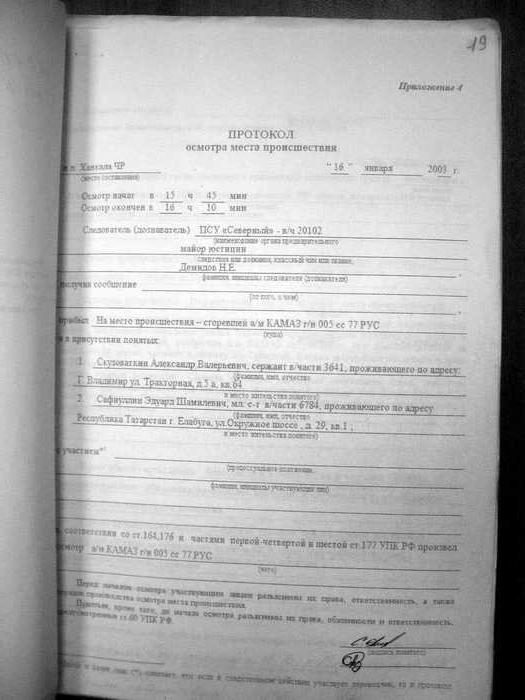An incident is a certain event that violates the usual order and way of life of people and has signs of a criminal offense. A message about him must be accepted by all authorities authorized to prosecute. 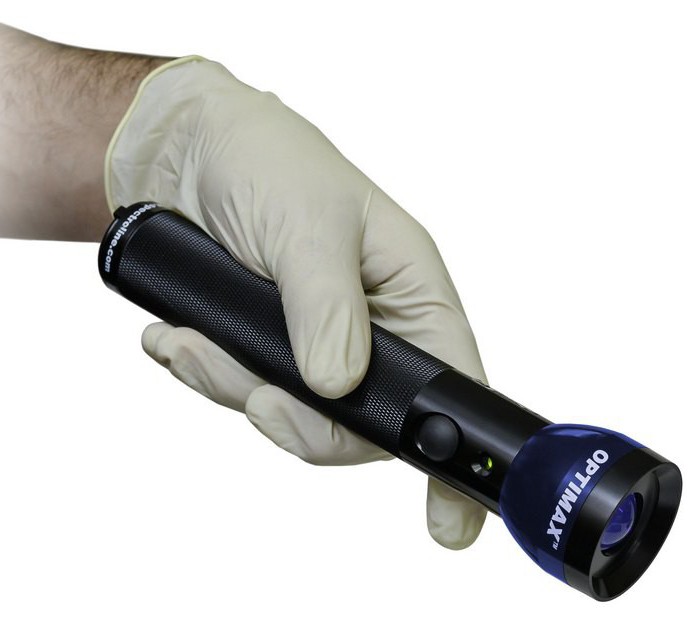
Event Location Inspection
During this investigative action, the site where the incident occurred is visually and using technical means. Inspection is carried out to identify, describe and seize the found traces of the crime. The study also reveals circumstances relevant to the investigation. Reporting the event and the place where it occurred is not enough information, but at the same time it is alarming, which is the reason for the need to study the site. During the inspection, the actual circumstances of the incident are established. According to the Code of Criminal Procedure, the study of the place acts as the only practical process performed before the start of the criminal proceedings. The procedure for its implementation is regulated in Art. 179 Code of Criminal Procedure. In accordance with the norm, a protocol for the inspection of the scene is compiled. The legislation provides certain rules for its design.
General characteristics of the document
The protocol of the inspection of the scene - an act that is considered as independent evidence. It is a reproduction of the results of forensic and legal studies of relevant objects and surveys, which are expressed using reproducible visual displays and verbally. Like other evidence, the scene inspection protocol must comply with the requirements of reliability, relevance and admissibility. Consider these principles.
Admissibility
It is determined by the legality of the investigative action and procedurally competent rules, in accordance with which a sample protocol of inspection of the scene of the incident is drawn up. The signs of admissibility include:
- Conducting a study of the site where the event occurred in the presence of grounds and reasons having legal significance.
- Fixing the reasons for the inspection in the protocol.
- Conducting research by authorized persons and after appropriate decisions are made in cases established by law.
- The reflection in the document of all the actions of employees who performed them, in a certain sequence.
- A listing of all persons who participated in the examination, indicating their name, job titles, and, if necessary, addresses.
- Reflection in the document of the order in accordance with which familiarization with it is carried out.
- Consideration of statements and comments of persons participating in the inspection in the act.
- The presence of signatures of citizens involved in the study site.
- Justification of the reasons why someone refused to certify the document.
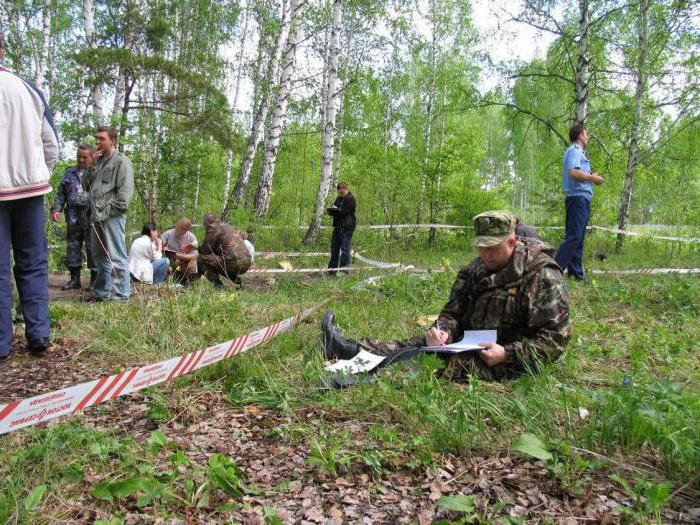
Credibility
It is expressed in accordance with the type in which the site was discovered and investigated, the means by which the actions were carried out, the objects identified during them, a description and an exhaustive listing that contains the protocol for the inspection of the scene (an example document illustrates the implementation of this principle). The comments and statements of the participants, even if they are inconsistent and if there are inconsistencies in them, allow us to clarify the situation and display the results of the actions taken.
Relativity
It is expressed in the description of the place, indicating the time of the investigation (up to minutes and hours).In addition, the document indicates the nature of the illumination and the weather features that occurred at the time of the study. The sample protocol for the inspection of the scene also provides for the transfer of technical equipment that was used by the investigators, and the citation of their individual designations. All objects seized by the investigator must be sealed. The document also contains a description of the use of hardware. Attaching them to the document is specifically negotiated. 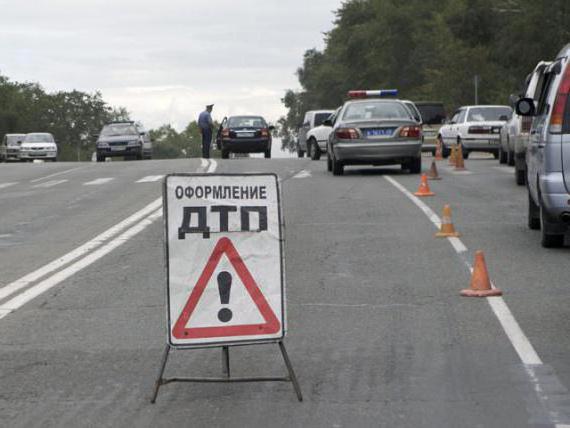
Structure
The sample protocol for the inspection of the scene includes three parts:
- Introductory.
- Descriptive.
- The final one.
Drafting is regulated in Art. 166 CPC. It reflects only what the investigator was able to detect when examining the site, and in the form in which it was observed. All assumptions, conclusions, conclusions of the employee remain outside the scope of the document. The sample of the protocol for the inspection of the scene of the incident does not include messages from persons about changes in the situation that occurred before the arrival of the investigator.
Introduction
It must contain the following information:
- Inspection time (date, hours, and minutes of the start and end of the inspection).
- Title, full name of the employee performing the research.
- The basis for the implementation of investigative actions, the nature of the event, which is the protocol for the inspection of the scene (murder, accident, etc.).
- Name of witnesses or other persons participating in the event. If necessary, the address of residence is indicated.
- Articles of the CPC, according to which a study was carried out and a protocol was drawn up.
- Address and coordinates of the site that was surveyed.
- Conditions in which the inspection took place (lighting, weather).
The introductory part also indicates that witnesses explained their duties and rights under Art. 60 of the Code of Criminal Procedure, and the investigator - his authority and responsibility for evading or refusing to fulfill imputed duties. This record must be certified by the signatures of all participants in the actions taken. 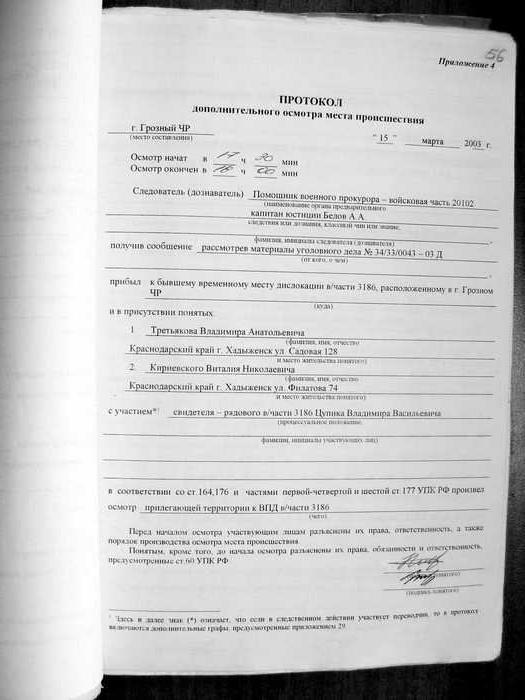
Important point
The main part of the document contains a general description of the object being examined, a description of its elements, individual parts, assemblies. Items are characterized upon detection. The results of their inspection are included in the main text of the act. If an immediate examination of objects is not possible, information about this and a note that they are withdrawn for examination should also be included in the protocol of inspection of the scene. The corpse can be examined in conjunction with a study of the territory where it is found. If the study was carried out separately, this should also be indicated in the document.
Descriptive part
It indicates:
- Location, characteristics, boundaries of the surveyed area. The latter, in particular, is of particular importance in the case when a protocol for the inspection of the scene of an accident is compiled.
- Mutual arrangement of rooms or sites.
- Possible ways of leaving and approach. This information is especially important when the reason why investigative measures are carried out and a protocol for inspection of the scene is made is theft.
- Description of the situation and individual elements, traces, objects, their position, dimensions, features, condition, means and methods that were used in their detection and study.
- Special circumstances specific to a particular place, including negative ones.
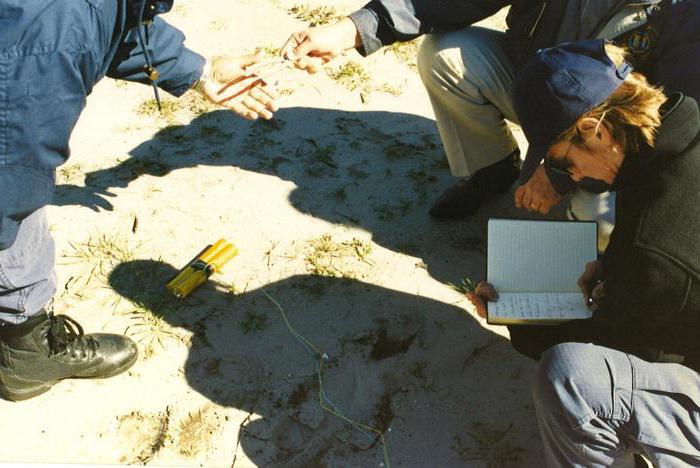
Final part
It contains:
- Instructions for the preparation of drawings, drawings, diagrams.
- The list of objects seized during the examination, the place where they were sent or transferred to storage.
- Description, from which traces and by what method, by what technical means, the production of casts, prints and other necessary copies was carried out.
- Indication of the use of film and photography, sound recording during the event.In this case, the name of the object, the model of the equipment, the type of lighting, the brand of the lens and filter, the method of shooting, its speed (for video and audio) is given.
- Indication that survey participants were notified of the survey.
- Statements and observations of witnesses that relate to the implementation of the survey, as well as decisions taken on them.
- Signatures of participants in the investigation.
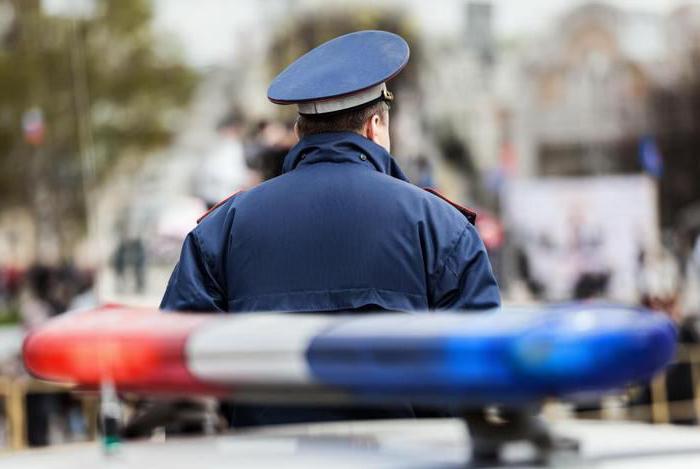
Methodology for compiling a document
Determination of the completeness of the description is carried out by the degree of connection of individual objects, traces with the incident. When drafting the document, the judicial perspective should be taken into account, that is, the fact that in the end it will act as evidence in the hearing of the case. In this regard, the protocol should clearly and fully reflect the situation. The description should clearly paint a picture of what happened and contain all the necessary information of evidence. For this:
- The protocol should reflect the process and results of the inspection as objectively, accurately and fully as possible.
- It is advisable to highlight parts of the document with subtitles. They can be: "Inspection of weapons", "Pose and location of the corpse", "Inspection of the room" and so on.
- The content of the document should contain short phrases that clearly and accurately describe the objects.
- The protocol should use generally accepted terms and expressions.
- One and the same object is called the same word throughout the description. When characterizing it, signs are indicated that distinguish it from other objects.
- The location of the object should be given relative to at least two landmarks.
- The description of conflicting information does not need to be drawn up in an independent section.
